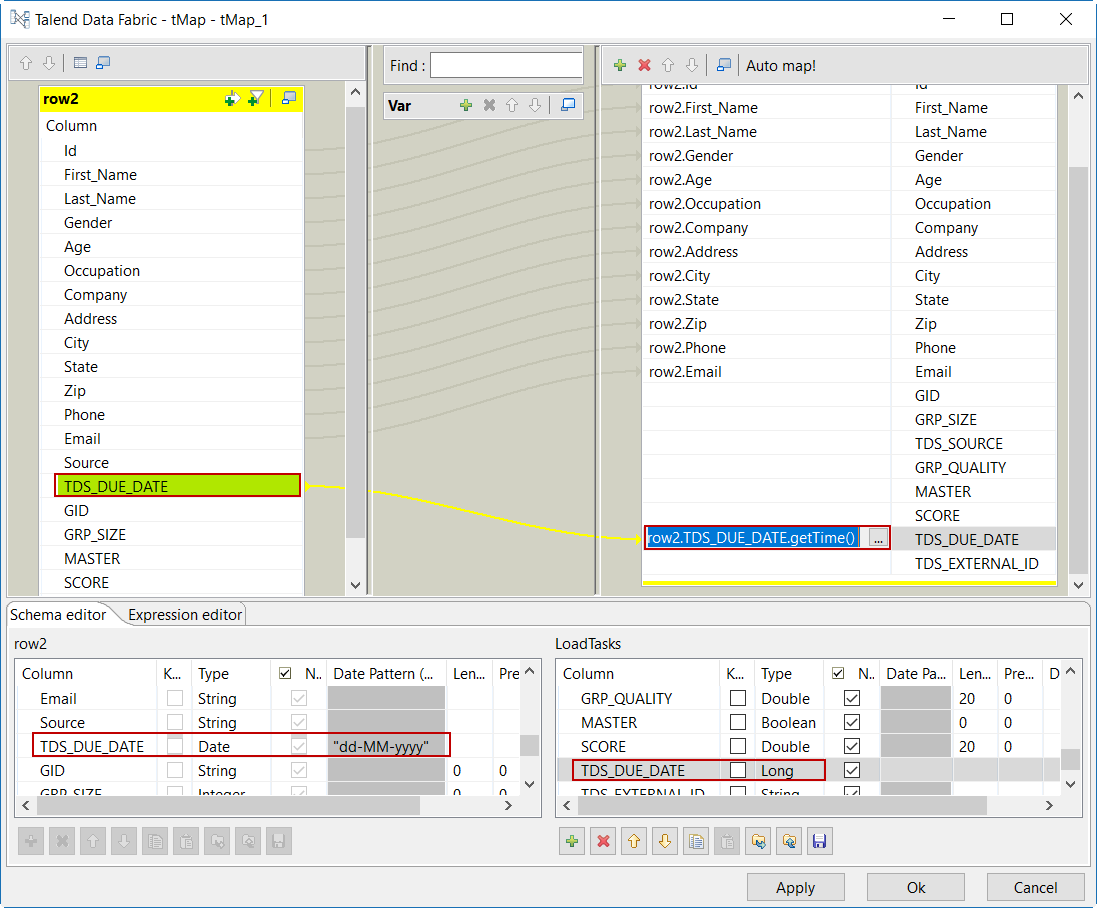Defining due dates from Talend Studio
Campaign owners can define task due dates when loading the tasks in the campaign by using a Talend Job. Running the Job creates the tasks in the campaign and label them with the due date and time using the format YYYY-MM-DD HH:mm:ss.
Information noteNote: Setting a due date when loading tasks
overrides the value which you may have been defined when creating or editing the
campaign.
You can use the due dates to filter the tasks in a campaign and facilitate task management.
Procedure
Did this page help you?
If you find any issues with this page or its content – a typo, a missing step, or a technical error – let us know how we can improve!


